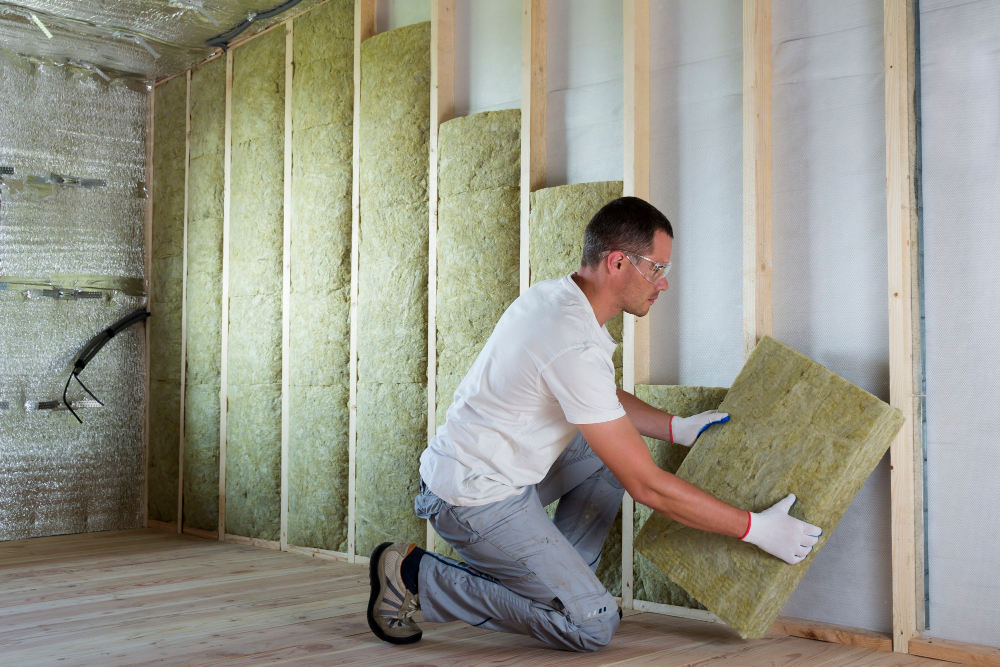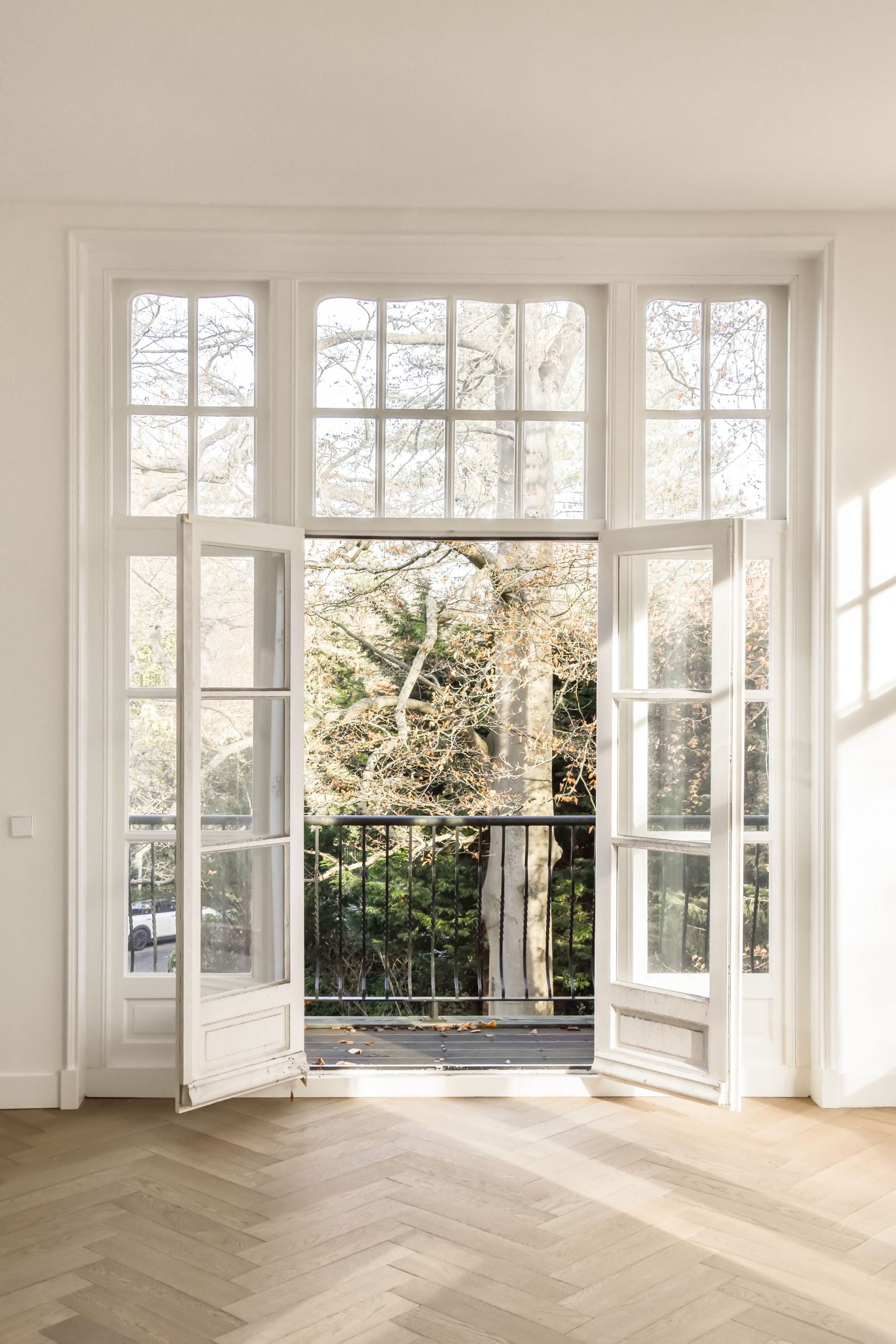Last updated on
Explore the world of innovative bulkhead door alternatives as we dive into their unique features, benefits, and applications for your home or commercial space.
Are you tired of staring at that unsightly bulkhead door every time you enter or exit your home? You’re not alone. Many homeowners struggle with finding ways to hide or improve the look of these necessary but often unattractive doors.
But fear not, my fellow decor enthusiasts! There are plenty of creative and budget-friendly alternatives to spruce up your bulkhead door and turn it into a stylish focal point. In this article, I’ll share some of my favorite ideas for transforming your bulkhead door from an eyesore to a statement piece in no time.
So let’s get started!
Roll-up Door Options
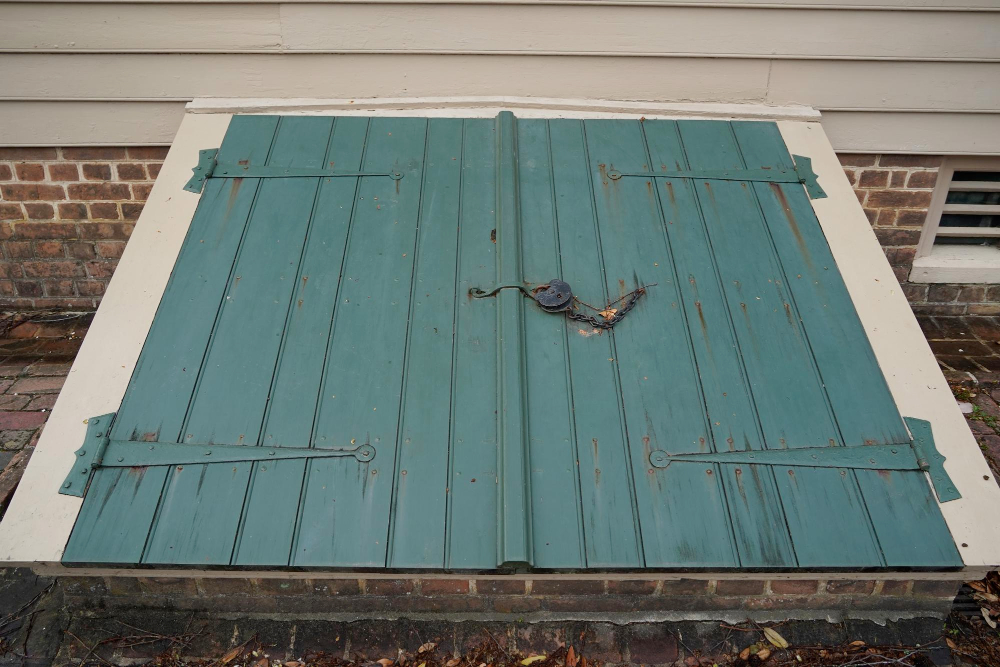
If you’re looking for a space-saving and convenient alternative to your bulky bulkhead door, roll-up doors might be the perfect solution. These doors are designed to roll up into a compact cylinder when opened, allowing for maximum clearance and easy access.
Roll-up doors come in various materials such as aluminum, steel or vinyl with different finishes that can match any decor style.
One of the most significant advantages of using roll-up doors is their durability and resistance against harsh weather conditions. They also provide excellent security features due to their sturdy construction material.
Another benefit is that they require minimal maintenance compared to other types of bulkhead door alternatives like hydraulic or sliding options. Plus, they are relatively easy to install if you have some DIY skills under your belt.
Hydraulic Doors
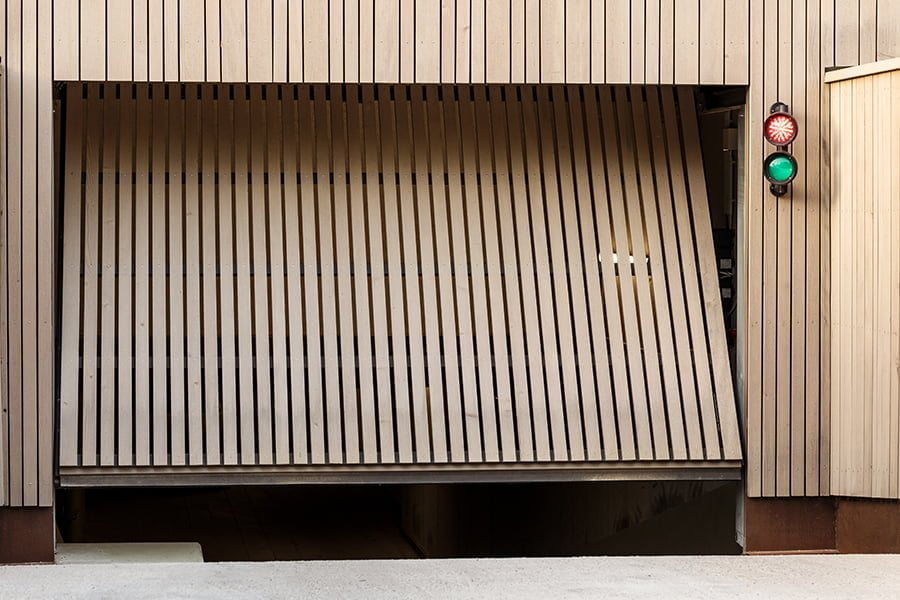
They offer a sleek and modern look while providing easy access to your basement or cellar. These doors operate on hydraulic cylinders that lift the door up and out of the way, allowing for maximum clearance when entering or exiting.
One of the main benefits of hydraulic doors is their ease of use. Unlike traditional bulkhead doors, which can be heavy and difficult to open, hydraulic doors require minimal effort thanks to their automated lifting mechanism.
Another advantage is that they provide excellent weather protection for your home’s lower level. Hydraulic Doors seal tightly against water infiltration during heavy rainstorms or flooding events.
Sliding Doors
Sliding doors come in various materials such as glass, wood or metal and can be customized to fit any size of the opening. They are easy to operate with just one hand and provide an unobstructed view when opened.
One of the most significant advantages of sliding doors is that they save space since they don’t require clearance like hinged or swinging doors do. This makes them ideal for smaller homes where every inch counts.
Another benefit is their energy efficiency; many sliding door models have double-paned glass which helps keep your home insulated during colder months while allowing natural light into your space.
Lastly, if security is a concern, some manufacturers offer reinforced locking mechanisms on their sliding door systems making them more secure than traditional bulkhead options.
Flood Barriers
Flood barriers are designed to prevent water from entering your home or commercial space during heavy rainstorms or floods. They come in various sizes and materials, including aluminum, steel, and vinyl.
One of the most popular types of flood barriers is the Aqua-Barrier® inflatable dam system. This innovative product can be quickly deployed around your bulkhead door using water pressure to create a temporary barrier that keeps out unwanted water.
Another option is FloodSax®, which are sandless sandbags made of biodegradable polymer crystals that expand when exposed to water. These lightweight bags can easily be stacked around your bulkhead door as an effective way to keep out rising waters.
Garage Door Conversions

This option is perfect for those who want to add more natural light and ventilation while also creating an attractive entrance. Garage doors come in various styles, including roll-up and sectional designs that can be customized with different materials such as wood or metal.
They are easy to operate and provide excellent insulation against the elements.
Converting your bulkhead door into a garage-style one requires some modifications, but it’s worth the effort if you’re looking for an upgrade that will enhance both functionality and aesthetics of your home’s exterior. You’ll need professional help from experienced contractors who specialize in this type of conversion project.
Once installed, you can paint or stain the new garage-style door any color that complements your home’s architecture style.
Swinging Doors
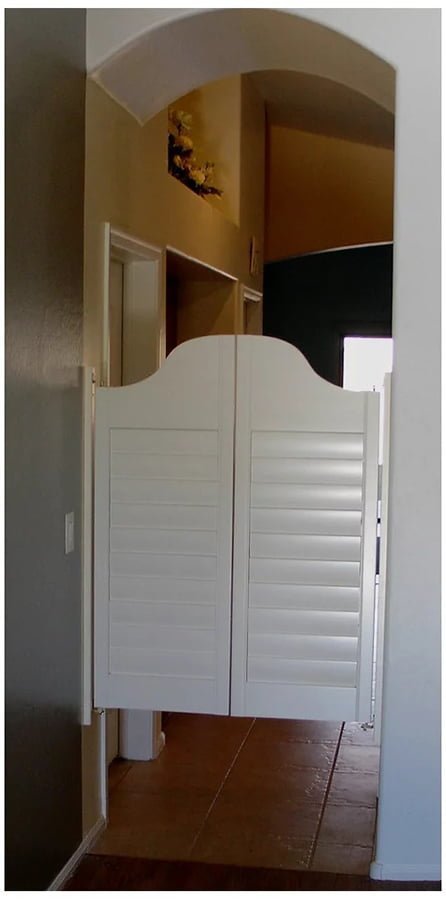
They come in various styles, materials, and sizes to fit any space or design preference. Swinging doors can be installed as single or double units that swing inward or outward depending on your needs.
One of the main advantages of swinging doors is their ease of use. Unlike bulkhead doors that require lifting heavy panels, swinging door systems operate smoothly with minimal effort.
This makes them an excellent choice for homeowners who want quick access to their basement without struggling with cumbersome entryways.
Another benefit of swinging door alternatives is their versatility in terms of customization options. You can choose from a wide range of finishes such as wood, metal, glass or composite materials to match your home’s exterior style seamlessly.
Whether you opt for a simple hinged design or more elaborate French-style double-doors complete with decorative hardware and sidelights – there’s no shortage when it comes to creative possibilities!.
Hinged Doors
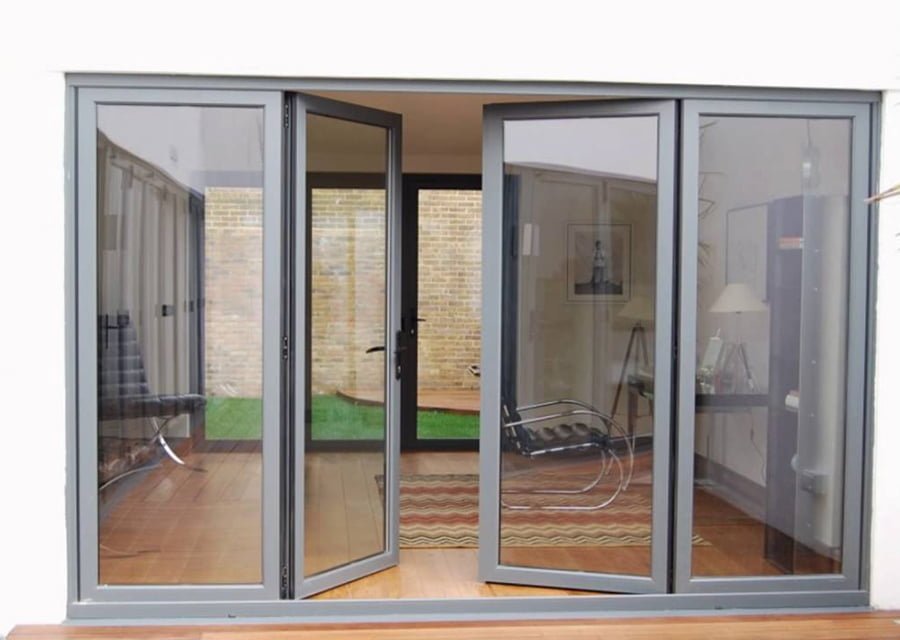
They come in various styles, materials, and sizes to fit your specific needs. Hinged doors can be made of wood, metal or fiberglass with different finishes such as paint or stain to match the exterior of your home.
One advantage of hinged doors is that they provide easy access for larger items like furniture or appliances that may need to be moved in and out through the bulkhead entrance. Hinged doors offer better insulation than some other options which can help reduce energy costs.
When choosing a hinged door for your bulkhead entrance it’s important to consider factors such as weather resistance and security features. Look for models with weatherstripping around the frame and threshold sealant at the bottom edge of the door panel to prevent water infiltration during heavy rainstorms.
Glass Wall Systems

They offer an unobstructed view of the outdoors while still providing protection from the elements. These systems come in various styles, including sliding glass walls, folding glass walls, and frameless glass walls.
Sliding glass wall systems are perfect for those who want to create an indoor-outdoor living space that seamlessly blends with their backyard or patio area. The panels slide open effortlessly on tracks, allowing fresh air and natural light into your home.
Folding glass wall systems work similarly but fold accordion-style instead of sliding along tracks. This design allows for more flexibility in how you use your space since you can partially or fully open up the system as needed.
Frameless glass wall systems provide a sleek look without any visible frames around each panel. Instead, they rely on structural support hidden within the surrounding structure to hold them securely in place.
Security Gates
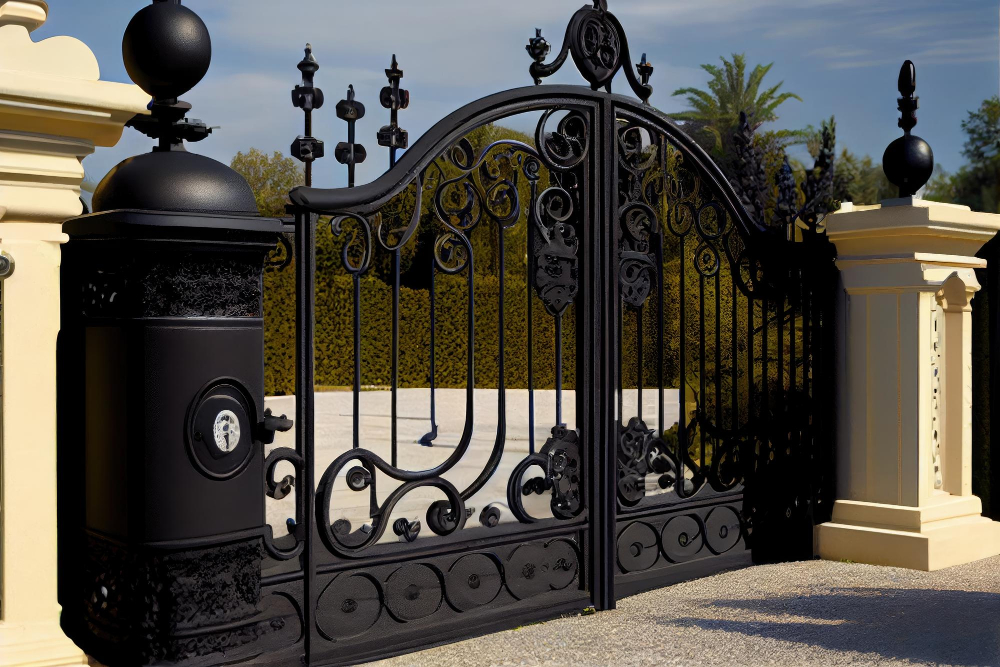
These gates come in various styles and materials, including steel, wrought iron or aluminum. They can be customized to fit your specific needs and preferences while providing an added layer of protection against intruders.
Not only do they offer enhanced safety features but also add aesthetic value to your home’s exterior. Security gates are available in different designs ranging from simple bars to intricate patterns that complement any architectural style.
Whether you want a sliding or swinging gate, there is always an option for every budget range. You can choose between manual or automatic operation depending on your preference.
Retractable Awnings
These versatile awnings can be easily retracted when not in use, allowing you to enjoy the sun or stars whenever you please. They come in a variety of colors, patterns, and materials that can complement any decor style.
One of the best things about retractable awnings is their flexibility. You can choose between manual or motorized options depending on your preference and budget.
Motorized retractable awnings are especially convenient as they allow you to control them with just a push of a button.
Another advantage is that these types of awning systems require minimal maintenance compared to other bulkhead door alternatives such as hydraulic doors or sliding glass walls which may need regular lubrication checks.
Retractable Awnings also provide an excellent solution for outdoor spaces like patios, decks, balconies where space might be limited but still requires shading solutions during hot summer days.
Accordion Doors
They offer flexibility and convenience, allowing you to easily open or close them as needed. Accordion doors come in various materials such as wood, vinyl, aluminum or glass and can be customized to fit any size opening.
One of the benefits of accordion doors is that they take up minimal space when opened since they fold neatly against each other like an accordion. This makes them ideal for smaller spaces where every inch counts.
Another advantage is their versatility; they can be used both indoors and outdoors depending on the material chosen. For example, if you want more natural light in your basement while still maintaining privacy from neighbors’ prying eyes then installing a glass accordion door would do just that.
Lastly but not least important is their affordability compared with other alternatives such as hydraulic or sliding bulkhead door systems which require professional installation services adding extra costs on top of purchasing the system itself.
Air Curtains
These innovative devices use a stream of high-velocity air to create an invisible barrier between your indoor space and the outdoors, effectively sealing off any drafts or unwanted elements from entering your home.
Not only do air curtains provide excellent insulation against temperature changes, but they also help keep out insects, dust particles, odors, and other pollutants that can negatively impact indoor air quality. Plus, they are incredibly energy-efficient compared to other door options since they don’t require constant opening or closing.
Air curtains come in various sizes and styles that can complement any decor theme. You can choose from recessed models that blend seamlessly into the ceiling or wall-mounted units with customizable colors to match your interior design scheme.
Vertical Lift Doors
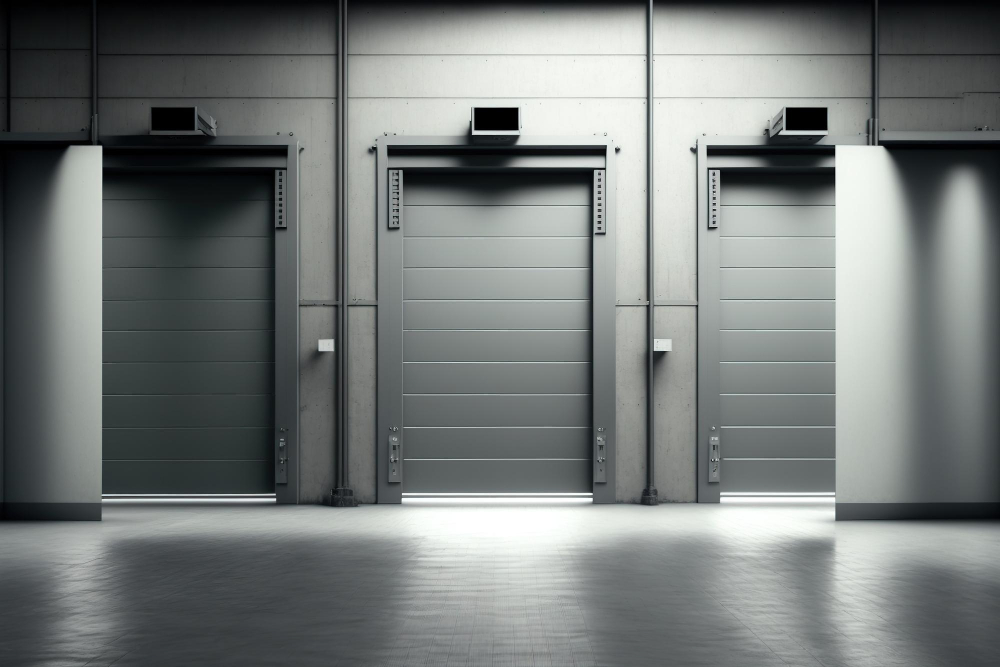
These types of doors operate by lifting straight up and down, which means they don’t require any additional space to swing open or close. This makes them ideal for tight spaces where traditional swinging or sliding doors just won’t work.
One of the biggest benefits of vertical lift doors is their versatility. They can be used in a variety of applications, from residential garages and storage sheds to commercial warehouses and airplane hangars.
And because they come in a range of sizes, you can find one that fits your specific needs.
Another advantage is their durability – vertical lift doors are built tough enough to withstand harsh weather conditions like heavy rain, snowstorms or high winds without compromising on functionality.
Exterior Louvered Doors
They offer an elegant and modern look while still providing the necessary functionality of a bulkhead door. Louvered doors come in various materials such as wood, metal, or vinyl and can be customized to fit any size opening.
One of the benefits of exterior louvered doors is their ability to provide ventilation while keeping out unwanted pests and debris. The slats allow for air circulation without compromising security or privacy.
Another advantage is that they require minimal maintenance compared to other types of bulkhead alternatives like hydraulic or sliding doors. Louvered panels can easily be removed for cleaning, painting, or replacement if needed.
Protective Screens
These screens are made of durable materials such as steel or aluminum mesh and can be custom-fit to your bulkhead opening. They offer excellent ventilation while keeping out unwanted pests, debris, and even intruders.
One of the biggest advantages of using protective screens is their versatility. You can choose from different screen sizes, colors, patterns to match your home’s exterior design scheme perfectly.
Plus they require minimal maintenance compared to other alternatives like hydraulic doors or glass wall systems.
Another benefit is that these screens allow natural light into your basement space without compromising privacy or security – something many homeowners appreciate when it comes time for entertaining guests in this area!.
Flexible Doors
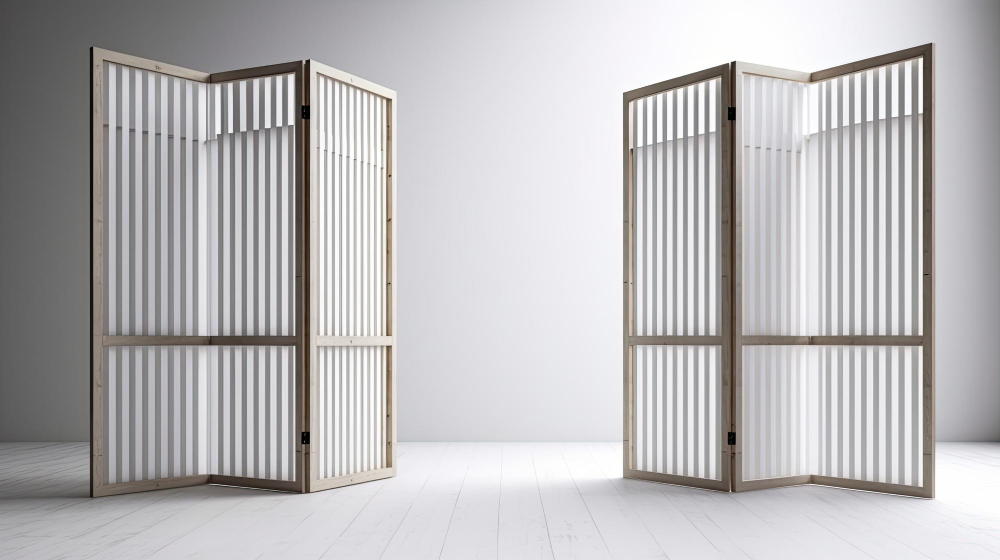
These doors are made of durable materials such as PVC or rubber and can bend or flex to accommodate different sizes and shapes of openings. They are ideal for spaces with irregularly shaped entrances, tight corners, or low ceilings where traditional hinged doors won’t fit.
Flexible doors come in various styles such as strip curtains, swing impact traffic doors, sliding screens among others. Strip curtains consist of overlapping strips that allow people to pass through while keeping out dust and debris from outside areas like garages or warehouses.
Swing impact traffic door models have a unique design that allows them to swing open easily when pushed by someone walking through but then quickly close behind them without any additional effort required on their part – making it an excellent option for busy commercial spaces.
Sliding screen models offer an easy-to-use opening mechanism while still providing protection against insects during warmer months when windows need ventilation but not necessarily full access into your home’s interior space!.
Fire-Resistant Doors
That’s why fire-resistant doors are an excellent option for those who want to ensure their home or commercial space is protected in the event of a fire. These specialized doors are designed with materials that can withstand high temperatures and prevent flames from spreading throughout the building.
While traditional bulkhead doors may not be able to provide adequate protection against fires, fire-resistant options offer peace of mind knowing that your property and loved ones are safe. Plus, they come in various styles and designs so you don’t have to sacrifice aesthetics for safety.
If you’re considering installing a new bulkhead door or replacing an existing one, consider investing in a fire-resistant option.
Insulated Door Solutions
They help regulate the temperature inside your home and reduce energy costs by preventing heat loss or gain through the door. Insulated bulkhead doors come in various materials such as steel, fiberglass, and wood.
Steel insulated doors are durable and low-maintenance but can be heavy to operate. Fiberglass is lightweight yet strong enough to withstand harsh weather conditions without warping or cracking over time.
Wood offers a classic look but requires more maintenance than other materials.
When choosing an insulated door solution for your bulkhead entrance, consider factors like climate zone rating (CZR), R-value insulation rating (RVI), air infiltration rate (AIR), U-factor ratings (UFR) which measures how well it insulates against heat transfer from outside into your home.
Industrial Curtains
These heavy-duty vinyl or PVC curtains can be customized to fit any size opening, making them ideal for large commercial spaces or industrial facilities. They come in various colors and thicknesses, providing options for privacy, temperature control, noise reduction, and dust containment.
One of the biggest advantages of industrial curtains is their flexibility. Unlike fixed doors that limit access points or require additional space for clearance when opened/closed; these curtains can be easily pulled back when not needed to create an open floor plan.
Another benefit is their durability – they’re resistant to wear-and-tear from machinery movement as well as harsh weather conditions like wind gusts and rainstorms.
Custom DIY Alternatives
Not only will this option allow you to save money, but it also gives you the freedom to design something that perfectly fits your style and needs.
One idea is building a wooden hatch cover that can be easily lifted off when needed. This option provides an attractive and functional solution while still allowing access in case of emergency or maintenance.
Another creative approach is using salvaged materials such as old doors or windows to create a unique entryway into your basement or cellar. With some basic carpentry skills and imagination, the possibilities are endless!
However, keep in mind that DIY projects require time, effort and skill; if not done correctly they could pose safety risks for yourself and others around you. So make sure to do thorough research before starting any project on your own.
Clamshell Doors
These doors consist of two separate panels that open upwards, resembling the shape of a clamshell. They provide easy access to your basement or cellar while also allowing for natural light and ventilation.
One advantage of Clamshell Doors is their durability. Made from high-quality materials such as steel or aluminum, they can withstand harsh weather conditions and heavy use over time.
Another benefit is their versatility in design options. You can choose from various colors, finishes, and styles to match your home’s aesthetic seamlessly.
Installation may require professional help due to the weight of these doors but once installed properly; they offer excellent security features with locking mechanisms that keep intruders out while keeping you safe inside.
Bulkhead Replacement: DIY or Not?
If you’re considering replacing your bulkhead door, the first question that comes to mind is whether to do it yourself or hire a professional. While there are plenty of online tutorials and videos on how to replace a bulkhead door, this may not be the best option for everyone.
DIY projects can save you money but require time and effort. Replacing a bulky metal door with an alternative solution requires some level of expertise in construction, carpentry, electrical work (if needed), and safety precautions.
If you have experience in these areas or are willing to learn through trial-and-error methods while taking all necessary safety measures into account – then go ahead!
However, if you lack confidence in your skills or don’t have enough time available for such an undertaking – hiring professionals might be the better choice. A skilled contractor will ensure that everything is done correctly from start-to-finish without any mistakes along the way.
Hidden Deck Bulkhead
This option involves creating an elevated deck that covers the bulkhead entrance and provides additional seating or entertaining space.
To build a hidden deck bulkhead, start by measuring the size of your existing door and determining how much decking material you’ll need. Next, construct a frame for the new deck using pressure-treated lumber or composite decking boards.
Once the frame is in place, install any necessary supports or joists before laying down your chosen decking material. Be sure to leave enough clearance around the edges of the door so it can still be easily accessed when needed.
Add any finishing touches such as railings or stairs leading up to your new outdoor oasis.
Secure It!
One option is to install a steel security gate over the bulkhead entrance. These gates come in various sizes and styles and can be customized to fit your specific needs.
Another way to secure your bulkhead door is by adding locks or deadbolts. This will prevent unauthorized access while also providing peace of mind knowing that your property is safe and secure.
For those who want an even higher level of protection, consider installing flood barriers around the perimeter of the bulkhead entrance. These barriers are designed to keep water out during heavy rainstorms or flooding events, but they also serve as an effective deterrent against intruders.
Window Egress
This is where window egress comes into play. Egress windows are designed to provide an escape route and allow for easy access by emergency personnel if needed.
Egress windows come in various sizes and styles, but they all share the same purpose: providing a safe exit from your home. They can be installed directly into the foundation wall or as part of a larger window well system.
When considering adding egress windows to your basement, it’s essential to check local building codes and regulations first. These codes will dictate the minimum size requirements for egress windows based on factors such as ceiling height and room size.
Walkout Entrance: Pros and Cons
A walkout entrance is essentially an exterior door that leads directly from the basement to the outside of your home. This type of bulkhead alternative has several advantages, including increased natural light and ventilation in the basement area.
Pros:
- Adds more natural light
- Increases ventilation
- Provides easy access for moving large items in/out of the house
- Can add extra living space or rental income potential
Cons:
- Requires excavation work which can be expensive
- May require permits from local authorities
- Potential for water damage if not installed correctly
Before deciding on whether or not to install a walkout entrance, it’s important to consider both its pros and cons carefully.
Adding a Walkout Entrance
A walkout entrance is essentially an exterior door that leads directly from your basement to the outside of your home. This type of bulkhead alternative not only adds functionality but also increases the value of your property.
Before starting this project, it’s important to consider factors such as local building codes and regulations, drainage systems, and potential water damage issues. It’s recommended that you consult with a professional contractor or engineer before beginning any excavation work.
Once all necessary permits are obtained and safety measures are in place, there are various options for creating an attractive walkout entrance design. You can choose from different types of doors such as sliding glass doors or French doors depending on personal preference and budget.
In addition to providing extra living space for family members or guests who prefer privacy while staying over at night; installing a walk-out door will allow homeowners easier access when moving large items like furniture into their homes without having them go through narrow staircases which can cause damages during transportation.
Build Your Own Door
Not only will it give you complete control over the design and materials used, but it can also save you money in the long run. Before embarking on this endeavor, however, make sure to do your research and plan accordingly.
Firstly, consider what type of door would best suit your needs – whether that’s a swinging or sliding option. Then determine what materials are necessary for construction based on factors such as climate conditions or security concerns.
Once these decisions have been made, gather all necessary tools and supplies before beginning construction. This may include lumber (pressure-treated is recommended), hinges or tracks for movement mechanisms if applicable (such as rollers), weatherstripping to prevent drafts from entering through gaps between panels when closed tightly together; screws/nails/fasteners appropriate size/type depending upon chosen material(s) being used).
Install a Railing
A sturdy railing provides safety for those using the stairs while also adding visual interest to the space. There are many different types of railings available, from classic wrought iron to sleek modern designs made of glass or metal cables.
Consider choosing a style that complements your home’s architecture and existing decor.
When it comes to installation, you have two options: DIY or hire a professional contractor. If you’re handy with tools and have experience working on similar projects, installing the railing yourself can save money on labor costs.
However, if you’re unsure about how to properly secure the railing posts into place or don’t feel comfortable working at heights, it’s best to leave this job up to an experienced contractor.
Sliding Glass Door
They offer an elegant and modern look while providing easy access to your outdoor space. Sliding glass doors come in various sizes, styles, and materials such as vinyl or aluminum frames with tempered or laminated safety glass.
One of the benefits of sliding glass doors is their energy efficiency. They can help reduce heating and cooling costs by keeping your home insulated from outside temperatures.
Another advantage is that they allow natural light into your home, creating a bright and welcoming atmosphere. Plus, you’ll have an unobstructed view of the outdoors without having to step outside.
If you’re considering installing sliding glass doors as a bulkhead door alternative for your basement entrance or walkout area, make sure to choose high-quality materials that will withstand harsh weather conditions over time. Consider adding curtains or blinds for privacy when needed.
Build a Roof Over It
Not only will this option protect your entrance from the elements, but it can also add some serious curb appeal to your home. A well-designed roof can complement and enhance the overall look of your property while providing practical benefits such as shade and shelter.
When considering this option, keep in mind that building a roof over an existing structure requires careful planning and execution. You’ll need to ensure that the new structure is properly supported by sturdy posts or columns anchored into concrete footings below ground level.
You may want to consider hiring a professional contractor who has experience with roofing projects if you don’t have any prior construction experience yourself. They will be able to help guide you through every step of the process from design plans all the way through installation.
Add a Patio

A well-designed patio can transform an otherwise unused space into an outdoor oasis perfect for entertaining guests or relaxing with family.
When planning your new patio, be sure to take into account the size and shape of your bulkhead door area. You’ll want to ensure that there is enough room around the entrance for easy access while still leaving plenty of space on the patio itself.
Consider using materials such as pavers or stamped concrete in coordinating colors with any existing hardscaping elements in your yard. Add comfortable seating options like lounge chairs or outdoor sofas along with some colorful throw pillows and blankets to create a cozy atmosphere.
To make it even more inviting, add some string lights overhead or install built-in lighting fixtures around the perimeter of the space.
Deck Hatch
A deck hatch is essentially a trapdoor that provides access to the space below while also serving as an attractive design element for your outdoor living area. It’s perfect for those who want easy access to their basement without having to go through the house.
Deck hatches come in various sizes and materials, so you can choose one that fits your specific needs and style preferences. Some are made of wood or metal, while others feature glass panels or even skylights for added natural light.
One advantage of using a deck hatch instead of traditional bulkhead doors is that it takes up less space on your property since it doesn’t require stairs leading down from ground level. This makes it ideal if you have limited outdoor space but still need convenient access to your basement.
Another benefit is its versatility; with proper installation and sealing techniques, deck hatches can be weather-resistant and provide insulation against cold temperatures during winter months.
Basement Window Well
Window wells are often overlooked when it comes to exterior design, but they can be transformed into beautiful features with the right materials and techniques.
One option is to install a custom-made cover that matches the style of your home’s architecture. This will not only enhance curb appeal but also provide added protection against water damage and debris buildup in the well.
Another idea is to turn your window well into a mini garden by adding soil, plants, rocks or other decorative elements. This can create an attractive focal point for both indoor and outdoor spaces while improving air quality around your home.
Flat Hatch
This type of door is perfect for those who want to create an unobtrusive entrance or exit while maintaining the integrity of their home’s design. Flat hatches are typically made from durable materials like steel or aluminum and can be customized to fit any size opening.
One advantage of using a flat hatch as your bulkhead door alternative is that it provides easy access without taking up too much space. Unlike traditional doors, which swing open and require clearance room, flat hatches simply lift up vertically with the help of gas struts or hydraulic lifts.
Another benefit is that they can be designed to blend seamlessly into your home’s exterior aesthetic. You can choose from various finishes such as powder-coated paint in different colors or even wood-grain textures if you prefer something more natural-looking.
Flat hatches also offer excellent security features since they are flush with the ground when closed, making them difficult for intruders to pry open compared to other types of doors like swinging ones.
Hidden Door
Hidden doors are not only functional but also add an element of surprise and intrigue to any space. You can choose from various designs, including bookcase doors or wall paneling that seamlessly blends in with the surrounding walls.
A hidden door is perfect if you want to keep your bulkhead entrance out of sight while maintaining easy access when needed. It’s also an excellent option if you have limited space or simply want something different than the traditional bulkhead design.
While it may seem like a daunting task, building a hidden door is relatively simple with some basic carpentry skills and tools. There are plenty of tutorials available online that can guide you through the process step-by-step.
Alternatively, there are pre-made kits available on the market that make installation even easier for those who prefer not to DIY their project entirely.
DIY Door
Plus, it can be a fun project to tackle with friends or family members.
To get started on your DIY bulkhead door project, first measure the dimensions of the opening where you’ll install it. Then decide on what materials you’d like to use – wood is a popular choice for its durability and versatility in terms of staining or painting.
Next up: designing your custom look! You could opt for something simple yet elegant like a classic panel design or go bold with an intricate geometric pattern. The possibilities are endless when creating your own unique piece!
Once you’ve got all the necessary materials and tools ready (including safety gear!), start assembling according to plan. Remember that this may take some time depending on how complex your chosen design is – but don’t rush it! Take pride in each step as you bring this beautiful new addition into existence.
Whether through purchasing pre-made alternatives or crafting one yourself from scratch- there are plenty of options available when looking at replacing that unsightly bulkhead door while staying within budget constraints!.
FAQ
What is the best material for a bulkhead door?
The best material for a bulkhead door is steel due to its durability, low-maintenance, water-resistance, and rot-free qualities, making it an economical option.
What type of door is best for basement?
A metal door with a deadbolt and without a window is best for basement, particularly for security purposes, although it does not let in any light.
What are the outside basement doors called?
The outside basement doors are called basement bulkhead doors.
What are the main factors to consider when choosing a bulkhead door alternative?
“Main factors to consider when choosing a bulkhead door alternative include materials, cost, ease of installation, durability, and aesthetics.”
How can one ensure proper insulation and waterproofing for outside basement doors?
To ensure proper insulation and waterproofing for outside basement doors, one should install weatherstripping and use a high-quality door sweep along with sealing gaps using waterproof sealants.
What are the steps to properly install and maintain a basement door?
To properly install and maintain a basement door, measure the space accurately, choose the right materials, install the door with proper hardware, weatherproof it, and routinely inspect and maintain it to ensure longevity and functionality.
Recap
Liked this article? Here's what you can read next:

